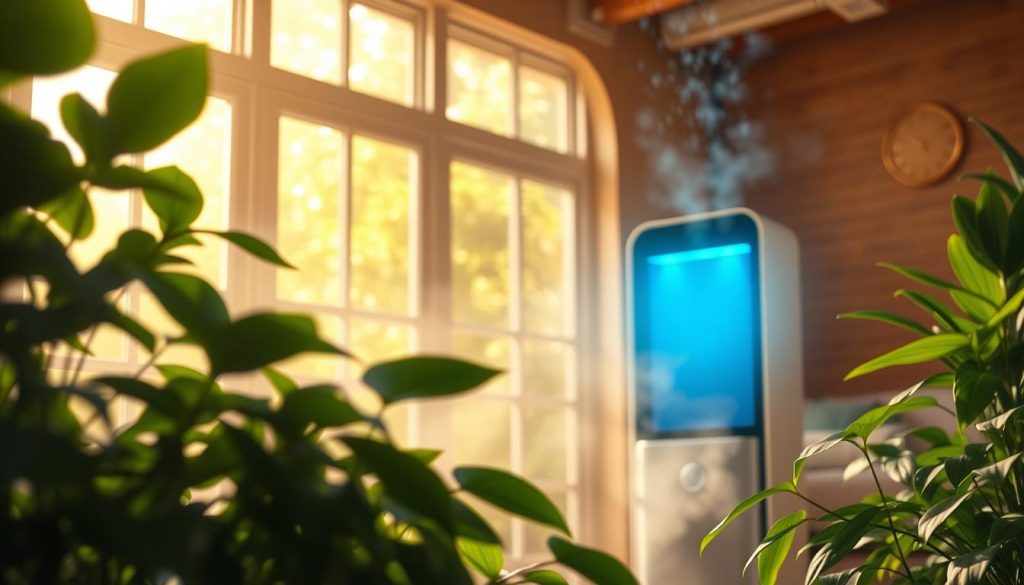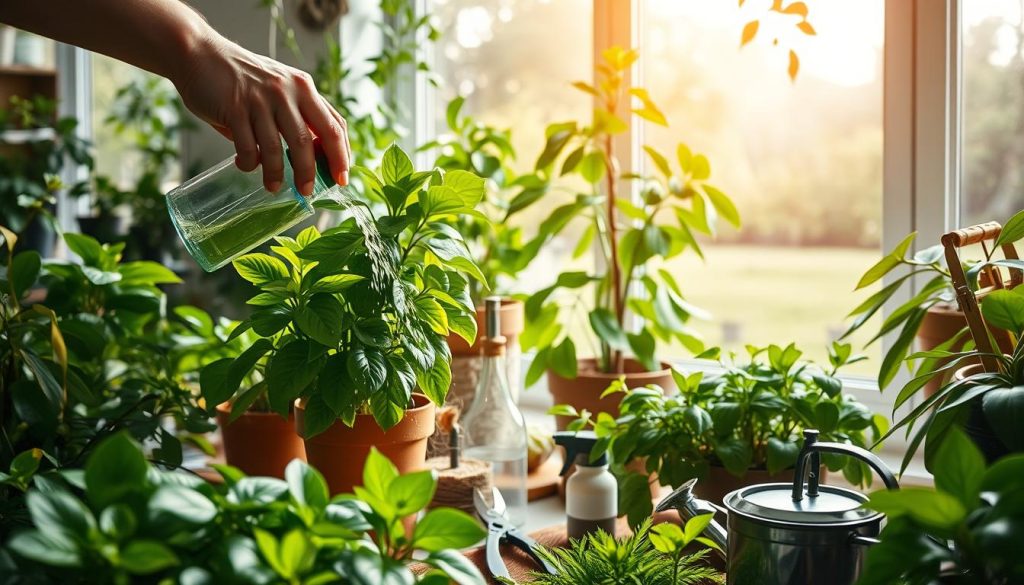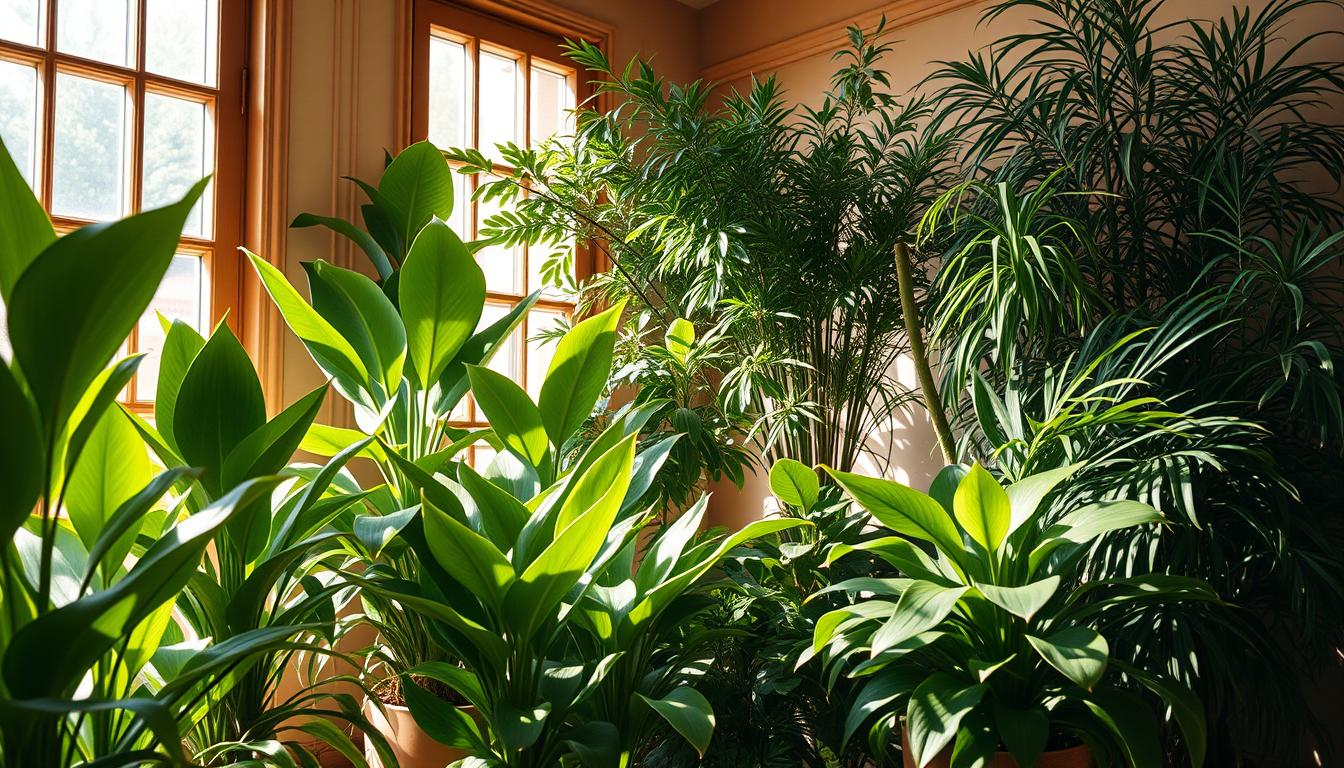In today’s world, maintaining good indoor air quality is crucial for healthy living and overall wellness. With the increasing amount of time spent indoors, it’s essential to find natural solutions for air purification. Negative ions and indoor plants offer a powerful combination to naturally cleanse the air in your home or office.
Exposure to negative ions has been linked to numerous health benefits, including improved mood, reduced stress, and enhanced cognitive function. When combined with the air-purifying properties of indoor plants, you can create a healthier and more refreshing indoor environment.
In this article, we’ll explore the science behind negative ions and how they improve air quality. We’ll also delve into the best air-purifying indoor plants and provide tips on choosing and caring for these natural air purifiers. By the end, you’ll be equipped with the knowledge to harness the power of negative ions and indoor plants for a cleaner, healthier living space.
Understanding Negative Ions and Their Benefits
Negative ions are tiny, electrically charged particles that are naturally abundant in nature, particularly in areas like waterfalls, beaches, and forests. These invisible molecules have been shown to have a profound impact on air quality and human health, making them an essential component of a healthy indoor environment.
When it comes to improving air quality, negative ions work by attaching themselves to positively charged particles, such as dust, pollen, and other pollutants. This process, known as ionization, causes these particles to become heavier and fall out of the air, effectively reducing air pollution levels and creating a cleaner, fresher atmosphere.

The Health Benefits of Exposure to Negative Ions
In addition to their air-purifying properties, negative ions have been linked to numerous health benefits. Studies have shown that exposure to negative ions can help:
- Reduce stress and promote relaxation
- Improve mood and alleviate symptoms of depression
- Enhance respiratory health by reducing inflammation and irritation in the airways
- Boost energy levels and mental alertness
- Strengthen the immune system
By incorporating negative ion-producing elements, such as indoor plants, into your living or working space, you can create an environment that not only looks and feels more natural but also actively contributes to your overall health and well-being.
Indoor Plants as Natural Air Purifiers
Indoor plants are not only aesthetically pleasing but also serve as natural air purifiers. Through a process called phytoremediation, plants can absorb and filter out various pollutants from the air, making your indoor environment healthier and more pleasant to be in.
How Plants Clean the Air
Plants absorb carbon dioxide and release oxygen through photosynthesis, but they also have the ability to remove toxic substances from the air. The leaves, roots, and soil microorganisms work together to break down and neutralize pollutants such as benzene, formaldehyde, and trichloroethylene. As the plants absorb these harmful substances, they transform them into harmless byproducts or store them in their tissues.

The Best Air-Purifying Indoor Plants
In the late 1980s, NASA conducted the Clean Air Study to identify the most effective indoor plants for removing air pollutants. Some of the top performers include:
- Snake Plant (Sansevieria trifasciata): This hardy plant is excellent at removing formaldehyde, xylene, and toluene from the air.
- Spider Plant (Chlorophytum comosum): Known for its ability to absorb formaldehyde, xylene, and carbon monoxide.
- Peace Lily (Spathiphyllum): Effective at removing ammonia, benzene, and trichloroethylene from the air.
| Plant | Pollutants Removed |
|---|---|
| Snake Plant | Formaldehyde, Xylene, Toluene |
| Spider Plant | Formaldehyde, Xylene, Carbon Monoxide |
| Peace Lily | Ammonia, Benzene, Trichloroethylene |
Incorporating these plants into your home or office not only enhances the aesthetic appeal but also contributes to a healthier and more refreshing indoor environment.
Combining Negative Ions and Indoor Plants for Optimal Air Quality
While negative ions and indoor plants are both effective at improving air quality on their own, combining these two natural air filtration methods can lead to a synergistic effect that enhances the overall air quality in your indoor environment. Together, they work to remove a wider range of pollutants and create a healthier, more refreshing atmosphere.

Negative ions attract and neutralize airborne pollutants such as dust, pollen, and smoke particles, causing them to fall out of the air. Meanwhile, indoor plants absorb carbon dioxide and other toxins through their leaves, roots, and soil microorganisms. By incorporating both negative ion generators and air-purifying plants into your space, you can target a broader spectrum of contaminants and achieve a more comprehensive air filtration system.
The benefits of this combined approach extend beyond just cleaner air. Exposure to negative ions has been linked to reduced stress levels, improved mood, and increased mental clarity. Similarly, the presence of indoor plants can boost productivity, lower stress, and create a more visually appealing environment. By merging these two natural air purification methods, you can create a space that not only promotes physical health but also enhances mental well-being.
To maximize the synergistic effect of negative ions and indoor plants, consider the following tips:
- Place negative ion generators near your air-purifying plants to help circulate the ions throughout the room.
- Choose plants with high air-purifying capabilities, such as snake plants, spider plants, or peace lilies.
- Ensure proper care and maintenance of both your negative ion generator and indoor plants for optimal performance.
By harnessing the power of negative ions and indoor plants, you can create a natural, efficient, and health-promoting air filtration system in your home or office, ultimately leading to a more comfortable and inviting indoor environment.
Word count: 293 words
Choosing the Right Plants for Your Home or Office
When selecting indoor plants to purify the air and enhance your living or working space, it’s essential to consider several key factors. By taking into account your specific needs and preferences, you can choose the perfect plants that will thrive in your environment while providing maximum benefits.
Factors to Consider When Selecting Indoor Plants
To ensure your indoor plants flourish and effectively clean the air, keep the following factors in mind:
- Lighting requirements: Different plants have varying light needs. Some thrive in low-light conditions, while others require bright, indirect light. Assess the natural light available in your space and choose plants accordingly.
- Pet-friendly plants: If you have furry companions, opt for non-toxic plants that are safe for pets. Some popular pet-friendly options include spider plants, prayer plants, and Boston ferns.
- Air-purifying efficiency: Certain plants are more effective at removing pollutants from the air than others. Research the air-purifying capabilities of different plant species to maximize the benefits in your home or office.
- Size and growth rate: Consider the available space and choose plants that fit comfortably without overcrowding. Be mindful of the plant’s mature size and growth rate to ensure it won’t outgrow its designated area.
Low-Maintenance Plants for Busy Individuals
If you have a busy lifestyle or are new to plant care, consider these easy-care plants that require minimal attention:
- Snake Plant (Sansevieria trifasciata): This hardy plant thrives in low light and can tolerate irregular watering, making it an ideal choice for forgetful plant owners.
- ZZ Plant (Zamioculcas zamiifolia): Known for its glossy leaves and tolerance to neglect, the ZZ plant is a perfect low-maintenance option for any space.
- Pothos (Epipremnum aureum): This trailing vine is incredibly resilient and can grow in a variety of light conditions, from low to bright indirect light.
- Chinese Evergreen (Aglaonema): With its attractive foliage and adaptability to various light levels, the Chinese Evergreen is a great choice for beginners or those with busy schedules.
By selecting plants that suit your specific needs and lifestyle, you can create a thriving indoor garden that not only purifies the air but also adds a touch of natural beauty to your surroundings.
Proper Care and Maintenance of Indoor Plants
Choosing the right indoor plants for your home or office is just the first step in leveraging their air-purifying benefits. To ensure your plants thrive and continue to clean the air effectively, it’s essential to provide them with proper care and maintenance. By following these plant care tips, you can keep your indoor gardening thriving and your space filled with fresh, clean air.

Watering and Fertilizing Your Plants
One of the most crucial aspects of plant care is watering. Overwatering and underwatering are common mistakes that can harm your plants. Always check the soil moisture before watering, and ensure the pot has proper drainage to prevent water from accumulating. Different plants have varying water requirements, so research your specific plant’s needs. Fertilizing your plants periodically with a balanced, water-soluble fertilizer can provide them with the nutrients they need to grow and thrive.
Providing Adequate Light and Humidity
Indoor plants require the right amount of light to photosynthesize and grow. Most air-purifying plants prefer bright, indirect light, but some can tolerate lower light conditions. Place your plants near a window that receives plenty of natural light, but avoid direct sunlight, which can scorch the leaves. Humidity is another important factor, as many indoor plants originate from tropical environments. You can increase humidity by misting the leaves regularly, placing a tray of water near the plants, or using a humidifier.
Pruning and Repotting Tips
Regular pruning helps keep your plants healthy and attractive. Remove any dead, damaged, or yellowing leaves to prevent disease and encourage new growth. When your plants outgrow their current pots, it’s time to repot them into larger containers with fresh potting soil. This gives the roots more space to grow and helps prevent the plant from becoming root-bound. Be gentle when repotting, and choose a pot that is one size larger than the current one.
| Plant Care Task | Frequency |
|---|---|
| Watering | As needed, based on soil moisture |
| Fertilizing | Every 4-6 weeks during growing season |
| Pruning | As needed to remove dead or damaged leaves |
| Repotting | Every 1-2 years, or when the plant outgrows its pot |
By following these plant care tips and providing regular maintenance, you can ensure your indoor plants remain healthy and continue to purify the air in your home or office. With a little attention and care, your plants will thrive, and you’ll enjoy the many benefits of indoor gardening and improved air quality.
Negative Ions and Indoor Plants: A Natural Solution for Cleaner Air
In today’s world, sustainable living and creating a healthy home environment have become top priorities for many individuals and families. One of the most effective and eco-friendly ways to achieve cleaner indoor air is by harnessing the power of negative ions and indoor plants as natural air purifiers.
Negative ions, abundantly found in nature near waterfalls, beaches, and forests, have been shown to neutralize pollutants, reduce airborne allergens, and promote overall well-being. Similarly, certain indoor plants possess the remarkable ability to absorb toxins and purify the air, making them an essential component of a healthy home.
By combining the benefits of negative ions and indoor plants, you can create a natural and sustainable solution for maintaining excellent indoor air quality. Here are some ways to incorporate this powerful duo into your living space:
- Place air-purifying plants like snake plants, spider plants, and peace lilies in various rooms to filter out pollutants and oxygenate the air.
- Install a negative ion generator or salt lamp near your indoor plants to enhance their air-purifying capabilities.
- Ensure proper ventilation and maintain optimal humidity levels to support the growth and effectiveness of your indoor plants.
Adopting this eco-friendly approach not only contributes to a healthier indoor environment but also promotes sustainable living practices. By relying on natural air purifiers instead of energy-consuming devices, you can reduce your carbon footprint and create a more harmonious living space that benefits both your well-being and the planet.
Enhancing Your Indoor Environment with Negative Ions and Plants
Incorporating negative ions and indoor plants into your living and working spaces can have a profound impact on your overall wellness at home. Not only do they improve air quality, but they also contribute to a more pleasant and productive environment. By embracing green living and biophilic design, you can create a space that promotes both physical and mental well-being.
Negative ions and indoor plants work together to purify the air, reduce stress, and boost your mood. The presence of plants in your home or office can increase productivity and creativity, making them essential elements for any workspace. Additionally, the calming effect of negative ions can help you relax and unwind after a long day, promoting better sleep and overall wellness.
Biophilic design, which integrates nature into indoor spaces, has gained popularity in recent years due to its numerous benefits. By incorporating elements like plants, natural light, and organic materials, you can create a more harmonious and inviting atmosphere. This design approach not only enhances the aesthetic appeal of your space but also contributes to your overall sense of well-being and connection with nature.
Embrace the power of negative ions and indoor plants to transform your living and working environments. By making these simple additions, you can enjoy cleaner air, reduced stress, and a more vibrant and productive space. Start your journey towards green living and enhanced wellness at home today!

